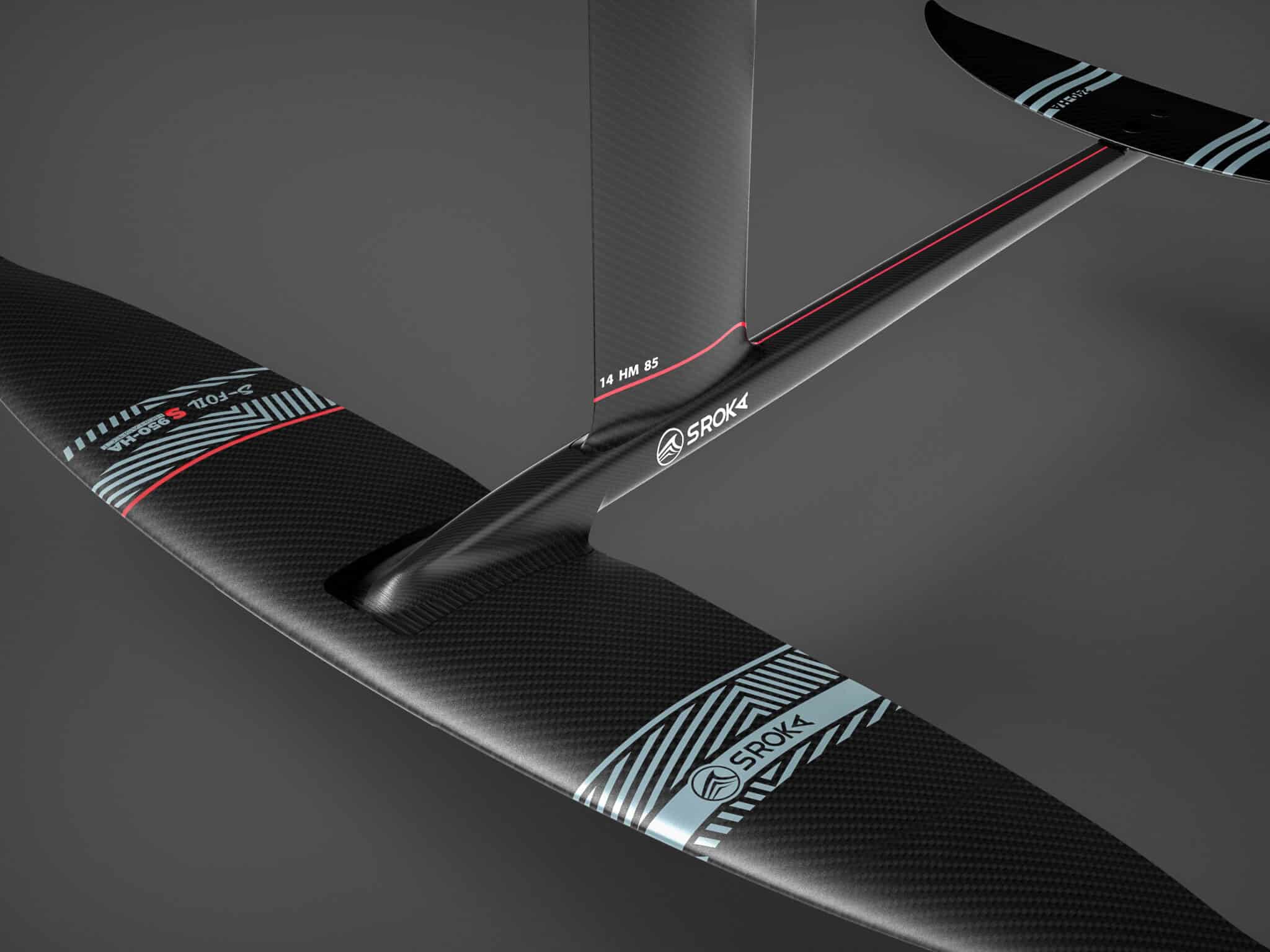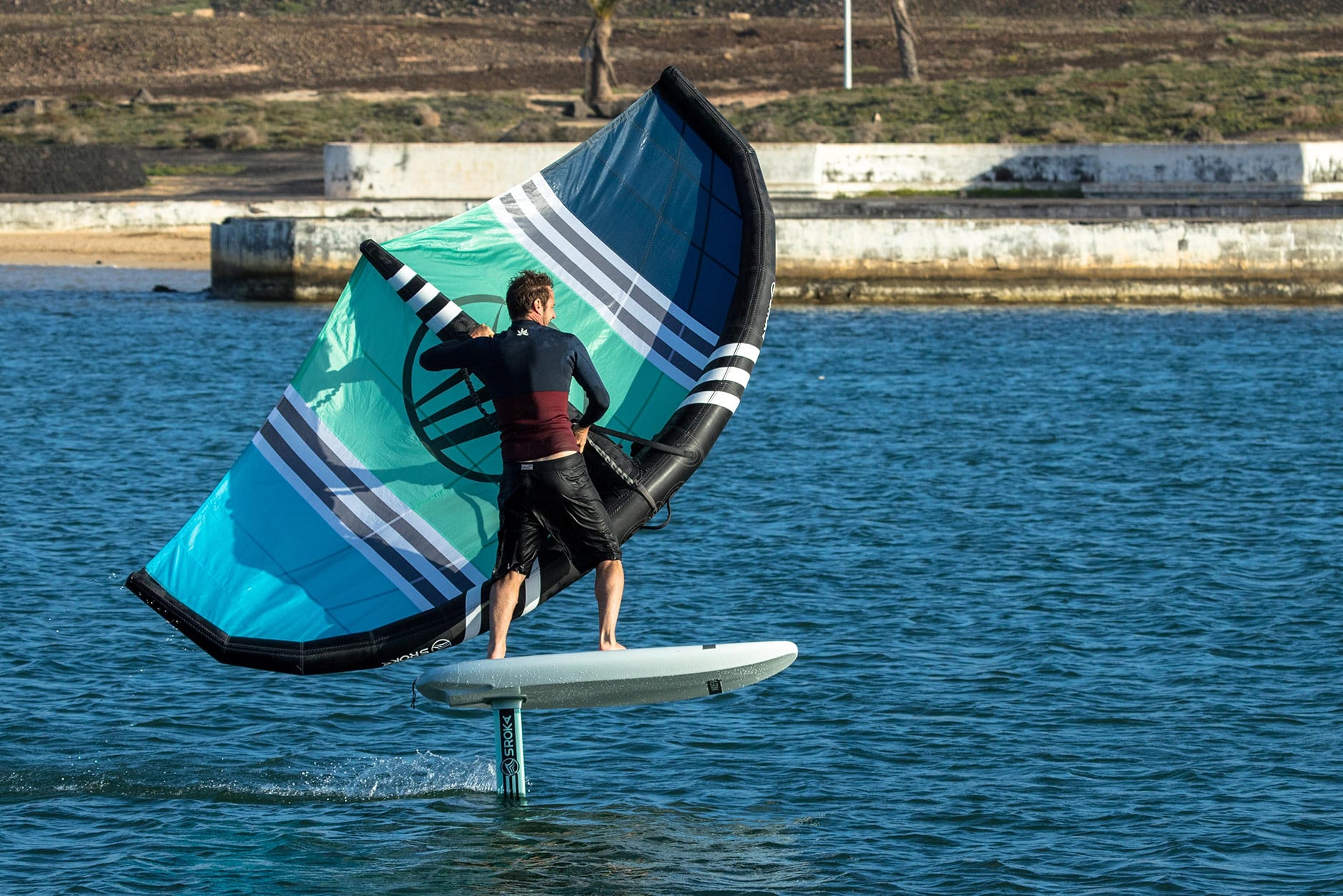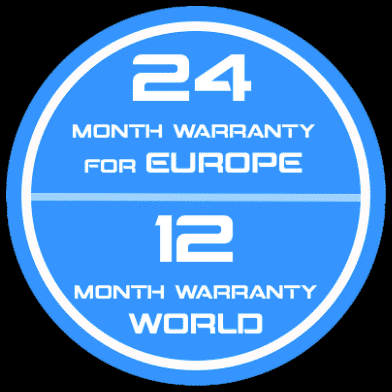Andalusia, a sunny region in the south of Spain, is a true paradise for water sports enthusiasts, especially wing foil. With its vast and diverse …
Carbon foil and aluminium foil, what are the differences?
A carbon foil performs better than an aluminum foil if and only if the carbon mast is well designed. In this article we will guide you and give you different levels of analysis to understand the real differences between a foil with an aluminum and carbon mast. You’ll find that performance varies from case to case: sometimes it’s similar, sometimes it’s very contrasting.
“It’s not enough to have the carbon designation to have a faster foil compared to an aluminium foil.”
Carbon foil and aluminium foil, what are the differences?
| Criterion Foil Aluminium | Foil Carbon Foil | |
|---|---|---|
| Price | Cheaper | More Expensive |
| Resistance | Stronger and not afraid of shocks | Doesn’t like shocks |
| Ease of use | Easy to assemble and adjust | Faster therefore finer adjustment. |
| Scalability | Modular according to desires and conditions | Also modular but each room costs more |
| Durability | Robust but susceptible to corrosion, 100% recyclableDurable | and resistant if well maintained but sensitive to impact, non-recyclable. |
| Weight | 4.7 kg | 3.5 kg |
| Maintenance | Needs to be dismantled and rinsed as often as possible | Does not require any special maintenance (check from time to time of all parts) |
First of all, let's look at the characteristics of aluminum foils :
- Price : An aluminum foil costs less because it is mass-produced. The mast and fuselage are made of aluminium and the fins are made of fibre or carbon.
- Resistance : Aluminum foils are sturdy and can withstand shocks. A poised aluminium mast remains usable.
- Easy to use : Generally, aluminum foils are easier to use because they are more suitable with large fins for beginners.
- Scalable : You can easily change the length of the mast and fuselage at a lower cost depending on the program you want to do.
- Combined with small fins, they can be very efficient and sometimes even faster than some carbon foils.
- Durability : an aluminium foil can be recycled perfectly (all parts made of aluminium)
On the other hand
- It requires a little maintenance, you have to rinse it and disassemble them at each session (it takes 2 min)
- It is generally heavier compared to a carbon foil.
- Even though the mast is stiff, it is a little less responsive than a carbon mast.
Characteristics of carbon foils :
- Price : a carbon foil can be more expensive or even much more expensive compared to an aluminum foil. An aluminium pole is produced on an assembly line and it is possible to produce many of them at a lower cost. A carbon mast is produced by hand, you can have up to 160 layers of carbon in a mast, which automatically leads to an explosion in manufacturing costs.
- Stability : if the carbon foil is well designed, it will be stiffer and provide more stability at high speeds. In the event that the technical development of the mast is not done in an optimal way, no performance gain will be observed, it may even be less efficient, less rigid than a well-developed aluminum foil.
- Performance : a carbon foil will perform better if and only if it is stiffer with less rope and less thickness, which reduces the drag generated by the mast and therefore increases performance.
- Durability : a carbon foil requires more care because it is more fragile. It is not very resistant to shocks (even if any carbon part is repairable) but can last a long time if you protect it. However, it is not recyclable, so choose it wisely.

As we have seen, an aluminium foil has advantages and disadvantages like the carbon foil, however
Is an aluminium foil really less efficient than a carbon foil?
We will really explain to you why this is not always true, and in case you opt for a carbon foil, do your research so as not to be disappointed.
Let’s start with some assumptions so that everyone can understand our thinking.
First of all, we will imagine that we are using the same aircraft (front winglet, rear wing and fuselage) We will focus on the mast because it generates a lot of drag due to its length, thickness, profile and chord.
There is 800 times more drag in water than in air. Therefore, the more contact surface there is, the greater the drag
The contact surface is defined by the thickness of the mast, its chord, its profile, its length.
Like what:
- If two masts are identical except for the construction (one in carbon and the other in aluminum): the performance will be the same because the drag will be identical.
- If a carbon mast has more chord (distance between the leading board and trailing edge) than an aluminium mast with the same profile, the same size and the same thickness: it will go slower than an aluminium mast because + equal rope + drag.
- A carbon mast with a slower profile (with more thickness close to the driving board, and there are infinitely many) will go slower than an aluminum mast with the same characteristics (chord, thickness, height) but with a faster and more efficient profile.
- A less rigid carbon mast (in torsion and bending) will be less stable and therefore potentially slower than a steeper aluminium mast. In this example, it is quite possible that an aluminum mast is stiffer than a carbon mast, especially if the carbon used is standard (not of good quality).
In summary, to claim that a carbon mast is faster than an aluminium mast is totally false because there are a lot of parameters that influence the rigidity and performance of a mast. Test and observe carbon foils yourself before buying one.
So how can a carbon mast, and therefore a carbon foil, be more efficient?
To be more efficient, you have to be stiffer, thinner, have less string and have a more efficient and efficient profile.
How is that possible?
To go fast, you have to reduce the rope of the mast (on the submerged part). Our aluminum mast has a 121mm cord, our carbon pole has a 108mm cord. So there is a decrease of more than 10% in the rope and also a 10% decrease in the drag related to the rope.
To go fast, you have to refine the mast as much as possible and therefore reduce its thickness. To give you an example, our aluminum mast is 18.5 mm and our carbon mast on the lower part (where there is the maximum drag) is less than 14 mm. In this example, we have reduced the thickness of the carbon mast by more than 25% and therefore we have reduced the drag of the mast by more than 25%.
The profile applied to a carbon mast should be the most slippery and fastest. Our profile used on our carbon mast reduces drag by 10% compared to our aluminium mast.
Finally, the mast should be the most rigid in torsion and bending. This is the most complicated part because to be rigid you have to:
- A perfectly studied draping plan to reduce twisting and bending. (And it’s not that easy to do, some brands can’t do it.) A mast with too much twist will not be able to be used with large wings such as a 1.40 m wing. It won’t handle lateral effort and will lead to parasitic movements and uncontrolled movements that will make your navigation uncontrollable at times.
- Increase the amount of carbon to maximize stiffness. At SROKA, our carbon mast is a mast with more than 140 layers of carbon. In the lower part, the mast is completely full. There is no foam, which optimizes stiffness and torsion.
- High-modulus carbon fibers. As a result of all these surface area reductions to reduce drag, our mast is made of 100% high modulus M40 J fibers that guarantee lower elasticity and better rigidity. Most of the time this type of carbon is used in F1, aerospace or aviation. However, it should be noted that this carbon costs much more and therefore increases the overall cost of a mast. A high-performance carbon mast is therefore a mast that will be expensive. Few foil brands make 100% carbon masts with high modulus fibers.
In short
In summary, for a carbon mast to be more efficient and allow you to go faster, you need to reduce its thickness, its chord, have a fast profile, increase the amount of carbon in the mast (because by reducing the chord and the thickness, the mast becomes more flexible) and finally use high modulus fibers to optimize the rigidity to have a reactive and fast foil.
In this case and only in this case, a carbon foil is faster than an aluminum foil.
“It’s not enough to have the carbon designation to have a faster foil compared to an aluminium foil.”
At SROKA we really want to push the limits of carbon foil and create a real difference compared to the aluminium mast.
So we offer you a 100% carbon mast with high modulus fibers, thin and steeper than our aluminum mast which is already a reference.
Increase your performance by opting for our Elite HA 14mm carbon mast. You will gain more than 25% more performance compared to a SROKA aluminum foil and almost 40% more performance compared to other foils of the competition.
If you still have questions about this, or for any other request, please do not hesitate to contact us !
Article you may be interested in
The 360 wing foil is a maneuver that allows you to start freestyle flat on the water. This trick, which involves making a complete turn …
Mauritius, known for its white sandy beaches and crystal clear waters, is a dream destination for water sports enthusiasts. Among the popular activities that attract …
Wingfoiling is an emerging water sport that is gaining popularity due to its high accessibility. Whether you are young or old, wingfoiling is an activity …






